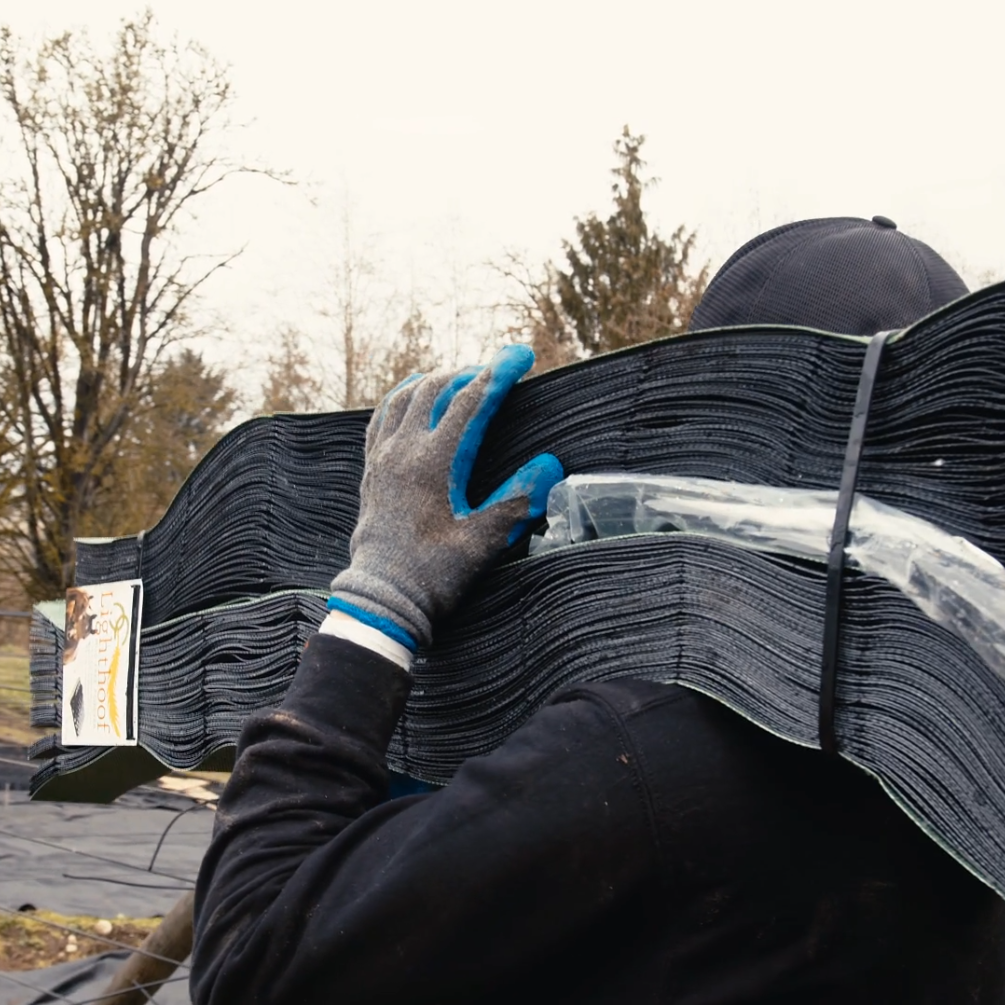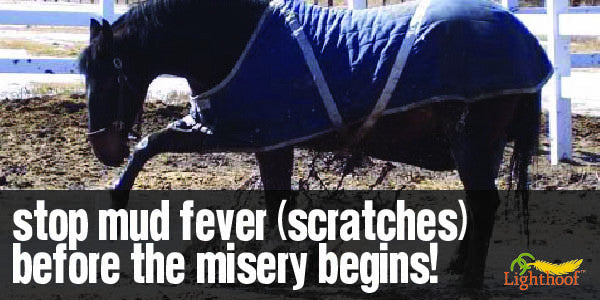For those familiar with mud fever, the first scabby sign of this bacterial infection is a loathsome sight. Also known as mud rash or scratches, this oozing mess is painful for your horse and very difficult to eliminate. But it’s not impossible! Following a rigorous plan of treatment can mend your equine’s legs.
Tip: For information about mud fever identification and prevention, see our companion article, What Every Horse Owner Should Know about Mud Fever.
Buzz
Very carefully clip the hair from the infected area. Removing the hair has multiple benefits:
- You can see just what you’re dealing with
- It’s easier to access the skin
- You take away the bacteria’s happy environment
Scrub-a-Dub
 Follow these steps to wash your equine’s legs. Don’t just wash where you see mud fever; assume the bacteria is on all of his legs, at least from the knee down. Clean them all!
Follow these steps to wash your equine’s legs. Don’t just wash where you see mud fever; assume the bacteria is on all of his legs, at least from the knee down. Clean them all!
- Rinse your horse’s legs thoroughly with cold water. (We like it cold because it reduces any swelling as it cleans.)
- Use an antiseptic/antibacterial wash like chlorhexedine to rigorously scrub his entire legs with a tough sponge. A lot of scabs will come off, leaving behind irritated, oozing, and sometimes bleeding skin.
- Warning: This can really hurt! You might want to ask your vet to lightly sedate your horse for this procedure if it’s a bad, painful case.
- Rinse well with cold water.
- Rub the non-scabby, non-irritated areas dry with a soft towel. Blot the red and scabby areas with soft paper towels.
- If you can, leave his try legs alone for a while (in a dry stall) to let the skin breathe.
Good Goop
 There are so many remedies out there, both bottled and home-made. Ask your vet what her preferred cream or salve is. Many equestrians swear by a mix of triple antibiotic and hydrocortisone ointments or creams. There are also some marvelous products on the market today.
There are so many remedies out there, both bottled and home-made. Ask your vet what her preferred cream or salve is. Many equestrians swear by a mix of triple antibiotic and hydrocortisone ointments or creams. There are also some marvelous products on the market today.
Whichever goop you choose, apply it liberally. You want it to deliver bacteria-fighting force until the next time you treat the area (about a day).
That’s a Wrap
Wrap the infected, well-medicated area with a bandage that breathes. Don’t wrap too tight or block air from reaching the skin.
Keep’em Dry
While you’re fighting mud fever, keep your horse in a dry stall or shelter. Moisture is the bacteria’s best friend! Don’t let water or mud near the bacterial war zone you’ve worked so hard to win.
Lather, Rinse, Repeat
Follow the regimen described above every day. Be patient; progress will be slow. Each day, more scabs will come off as you scrub. You should see the swelling diminish and gradually the red, oozy skin will turn lighter pink and healthy. If you don’t see any progress at all after a week, contact your vet to discuss an alternative medication. But know that it can take weeks for all of the infection to go away.
And STAY Out!
Mud fever is a stubborn foe. Even after you see no signs of the infection, continue to scrub your horse’s legs with antiseptic every few days. To keep the bacteria from striking again, follow the guidelines in our companion article, What Every Horse Owner Should Know about Mud Fever.




Leave a comment
This site is protected by hCaptcha and the hCaptcha Privacy Policy and Terms of Service apply.